For many, indulging in a perfectly paired wine, cheese, and charcuterie experience is a delightful way to spend an evening. With a vast array of options available, it could initially feel intimidating to choose the ideal wine to complement the distinct flavors of various cheeses and charcuterie items. However, by understanding some key principles and learning about popular and successful pairings, one can confidently create a memorable gastronomic event at home or social gatherings.
In this article, we will explore the fundamentals of wine, cheese, and charcuterie pairing, and provide a solid jumping-off point for combining these delicious elements. As we dive into the world of wine, we’ll discuss various types of cheese and charcuterie, and discover the nuances that contribute to obtaining a harmonious and well-rounded palate experience. Additionally, we will outline some common mistakes to avoid while embarking on this delightful journey.
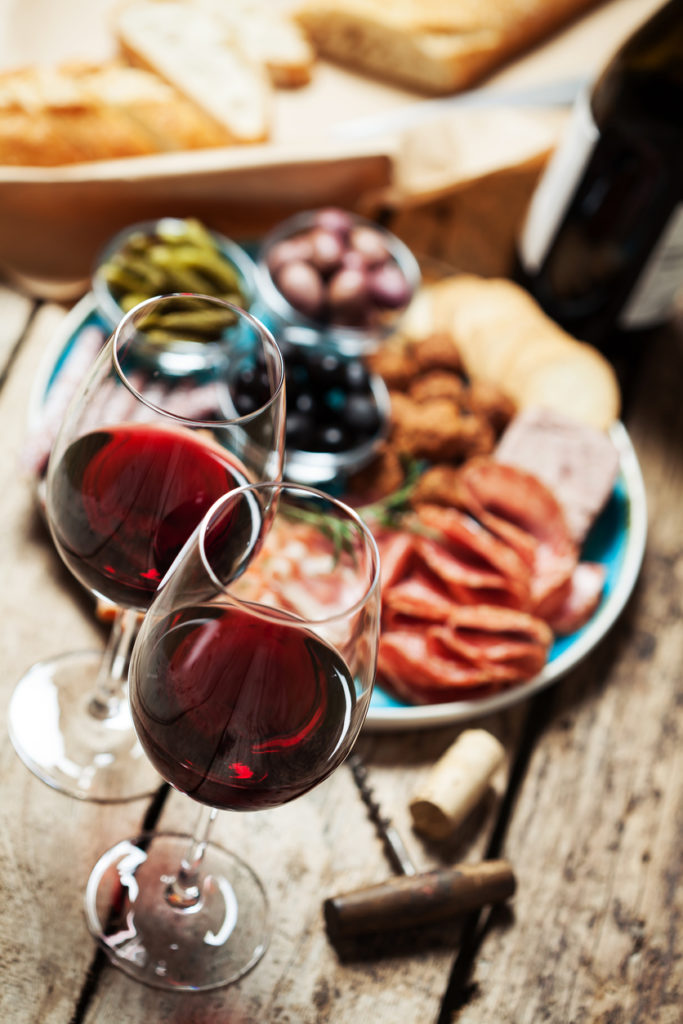
Key Takeaways
- Understand the basics of wine, cheese, and charcuterie pairing for an enhanced culinary experience
- Discover popular and successful pairings to serve as a foundation for experimentation
- Be aware of common pairing mistakes to ensure a balanced and enjoyable flavor profile
Understanding Wine
Wine is a complex beverage with many nuances and flavors that can elevate a cheese and charcuterie board. Selecting the right wine can enhance the experience of savoring different cheeses and cured meats, as well as showcase the wine itself. It is essential to understand the basic components of wine – acidity, tannins, body, and sweetness – to make an informed choice.
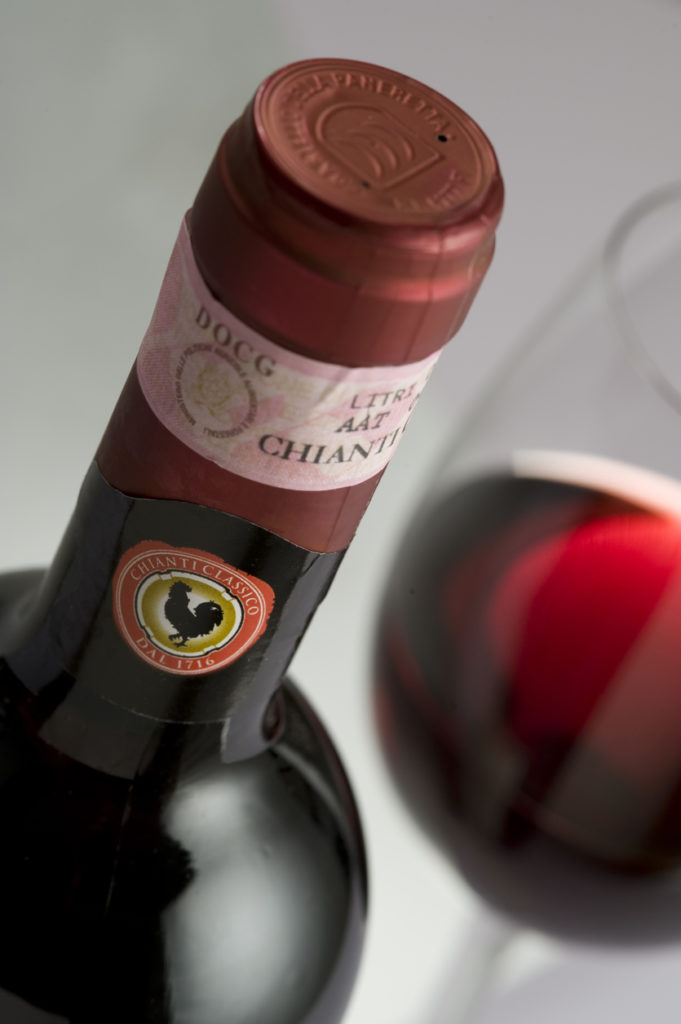
Acidity
This chracteristic is a crucial factor that affects the taste and balance of wine. It brings freshness and brightness to the wine, making it a perfect complement to fatty or rich cheeses. Generally, white wines have a higher acidity level than red wines, making crisp white wines an excellent partner for creamy and soft cheeses.
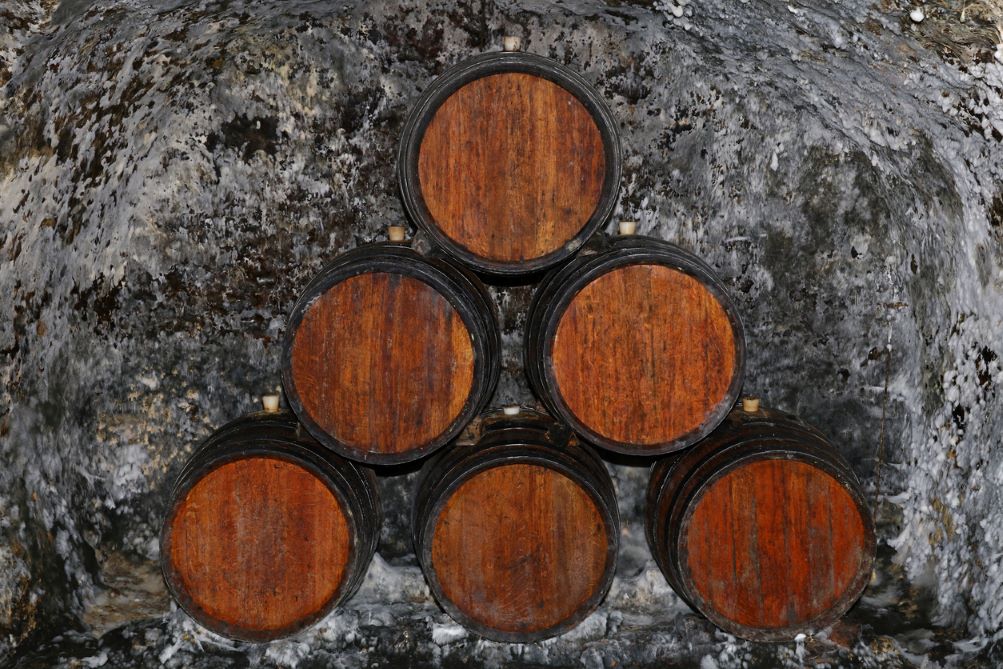
Tannins
These are compounds derived from grape skins, seeds, and oak barrels. They create a drying sensation and can add structure to a wine. Tannins are mainly found in red wines and are known to pair well with hard, aged cheeses that have a higher fat and protein content. The tannins interact with the fats and proteins, creating a harmonious balance for the palate.

Body
This refers to the weight, texture, and mouthfeel of wine. It can range from light to full-bodied, which significantly impacts the pairing. Light-bodied wines are delicate and subtle, while full-bodied wines are bold and rich. Typically, full-bodied wines complement bold cheese and charcuterie flavors, while lighter-bodied wines pair well with milder, less intense options.
Sweetness
Sweetness is another vital element of wine, particularly for dessert wines such as Port or Sauternes. The sweetness of the wine contrasts with the saltiness of the cheese, creating a pleasant balance in flavor. Blue cheeses or saltier aged cheeses, like Stilton or Gorgonzola, are perfect companions for sweeter wines.
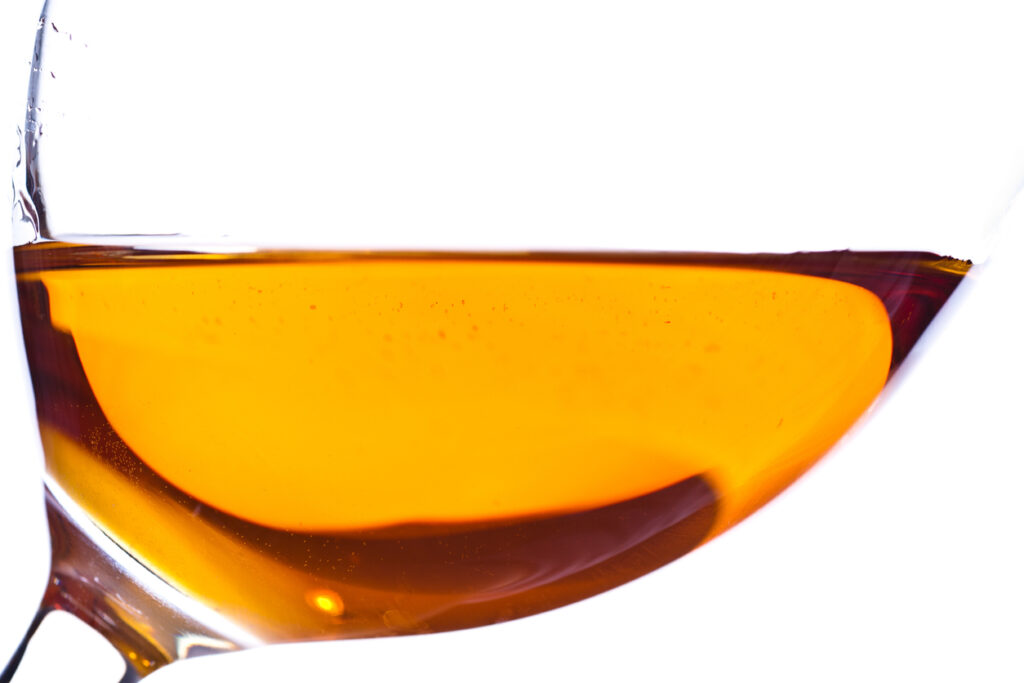
Choosing the right wine to pair with cheese and charcuterie can be an art well worth mastering, as every combination comes with countless possibilities. Understanding the four main elements of wine – acidity, tannins, body, and sweetness – is the key to unlocking the ideal pairing and enhancing the overall experience for both the wine and the accompanying flavors.
Understanding Cheese
Cheese can be categorized into several types based on their texture and flavor profile. The main types include soft, semi-soft, semi-hard, and hard cheeses. Understanding these categories can help you to choose the appropriate wine for pairing.
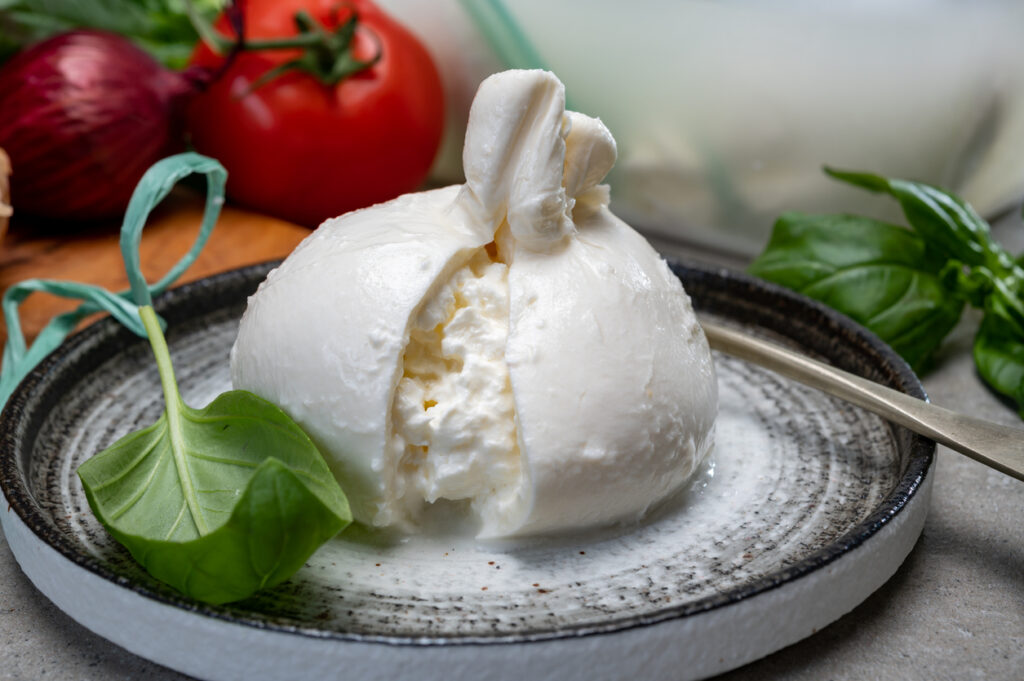
Soft Cheeses
Soft cheeses tend to have creamy and spreadable textures. They include cheeses like Brie, Camembert, and goat cheese. These cheeses often have earthy or tangy flavors. A light, crisp wine like Sauvignon Blanc or Champagne can complement the rich creaminess and acidity of soft cheeses.
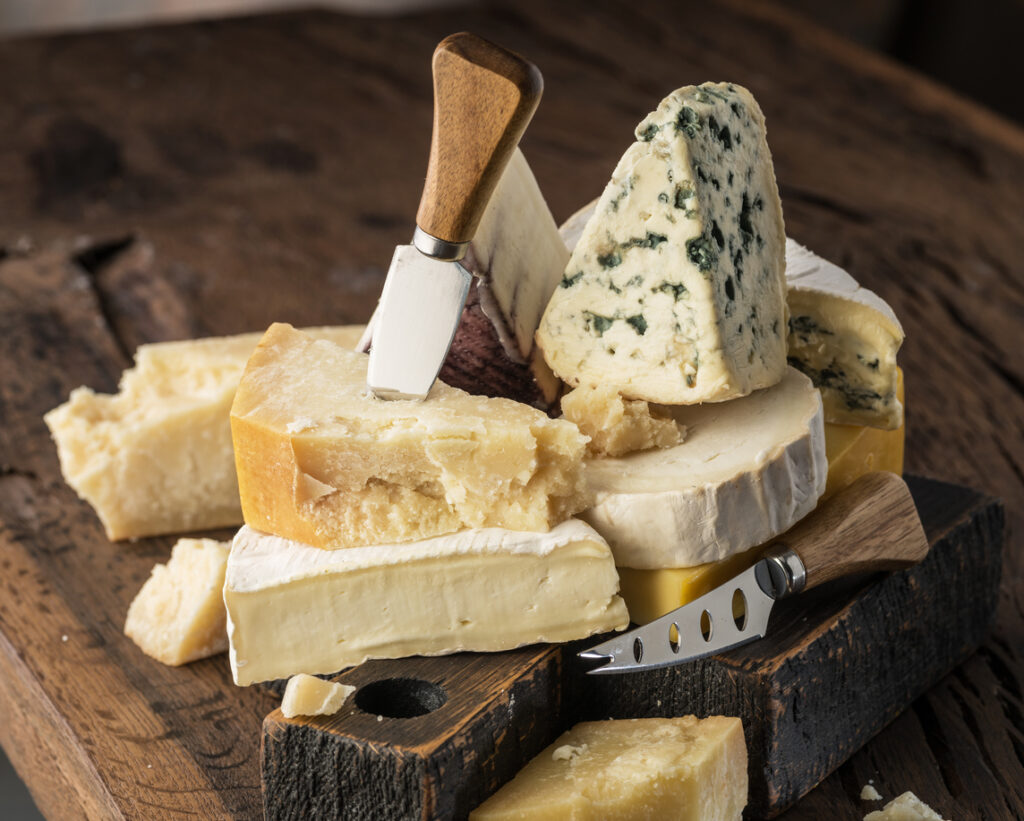
Semi-soft cheeses
These cheeses are more firm than soft cheeses but still retain some creaminess. Examples include Gouda, Havarti, and Fontina. These cheeses often have mild and buttery flavors, allowing them to pair well with a variety of wines. A medium-bodied Chardonnay or a fruity Pinot Noir can enhance the flavors of semi-soft cheeses.
Semi-hard cheeses
Semi-hard cheeses have a firm texture and can be easily sliced. Cheeses like Cheddar, Gruyère, and Manchego fall into this category. Their flavors can range from nutty to sharp, depending on their age. A full-bodied red wine like Cabernet Sauvignon or a light white wine such as Pinot Grigio can balance the intensity of semi-hard cheeses.
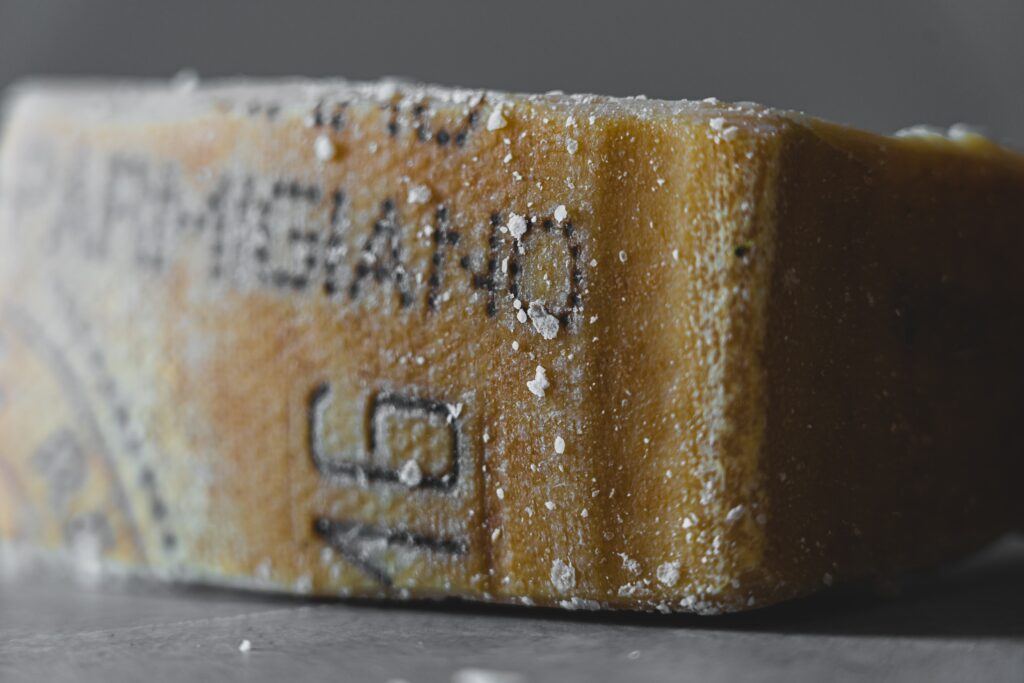
Hard cheeses
They have the firmest texture and tend to be aged for longer periods. Parmesan, Asiago, and Pecorino are examples of hard cheeses. They typically have bold, nutty, and salty flavors. Robust red wines like Barolo or Chianti can be good matches for these assertive cheeses.
When creating a cheese and charcuterie board, it’s important to consider the variety of flavors and textures and select wines that can complement and enhance the overall experience. Experimenting with various pairings can help you find the right balance for your palate.
Understanding Charcuterie
Charcuterie, a French term, refers to the art of preparing and assembling cured or preserved meats, often accompanied by various accompaniments such as cheeses, fruit, and crackers. While charcuterie boards have gained popularity in recent years for their visual appeal and varied flavors, understanding the proper pairing of various elements can enhance the enjoyment of this culinary experience.
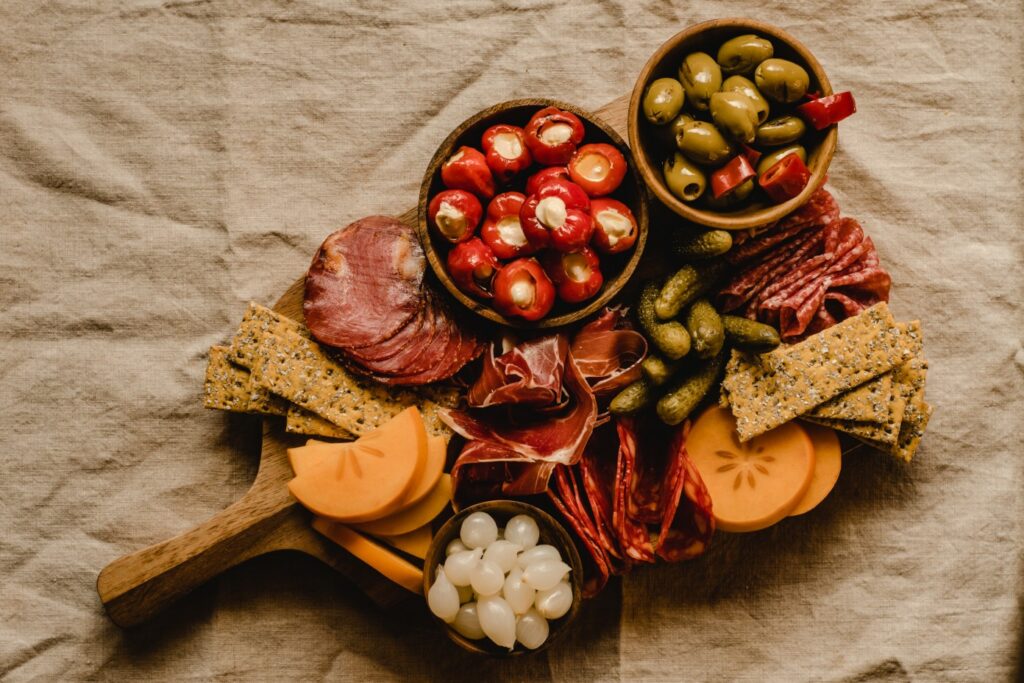
Flavor types of charcuterie
Traditionally, charcuterie focuses on a variety of cured meats, which can include salami, prosciutto, and sausages. Each type of meat has its distinct flavor profile that ranges from mild to bold, and choosing a diverse selection allows the diners to explore an array of tastes.
Meat types and flavor profiles:
- Mild: Mortadella, Prosciutto cotto
- Medium: Soppressata, Chorizo
- Bold: Calabrese salami, Speck
In addition to meats, a well-composed charcuterie board also contains a variety of cheeses that complement both the flavors and textures of the meat selections.
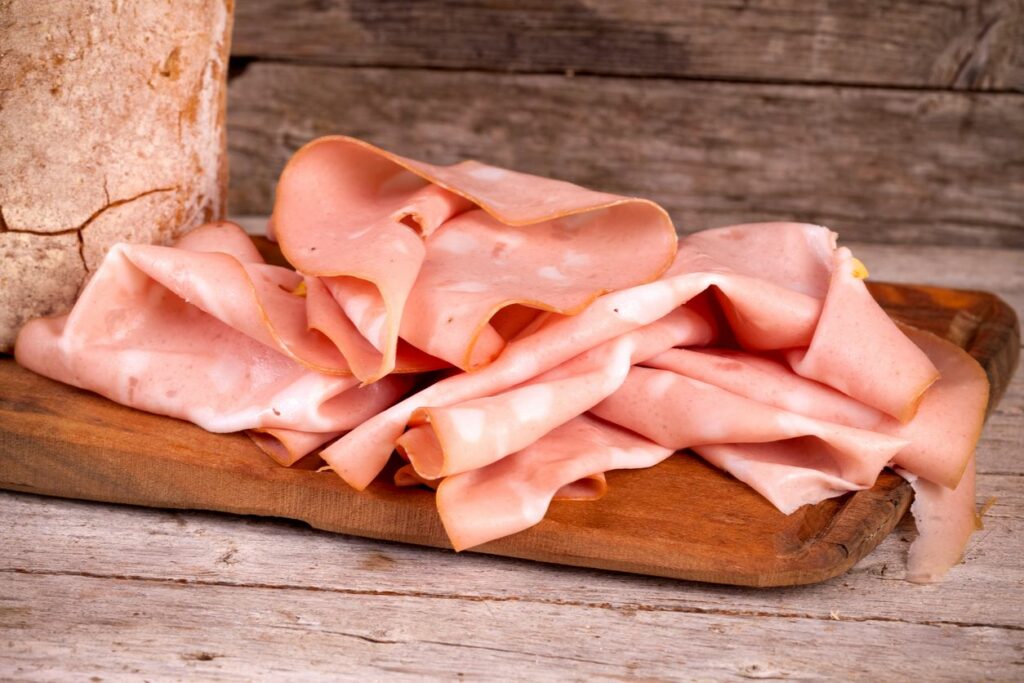
Flavor types of Cheese
To balance the board, it is crucial to include a range of cheese types, such as soft and creamy brie, tangy goat cheese, or firm and aged cheddar.
Cheese types and flavor profiles:
- Mild: Brie, Gouda
- Medium: Goat cheese, Swiss
- Bold: Aged cheddar, Stilton
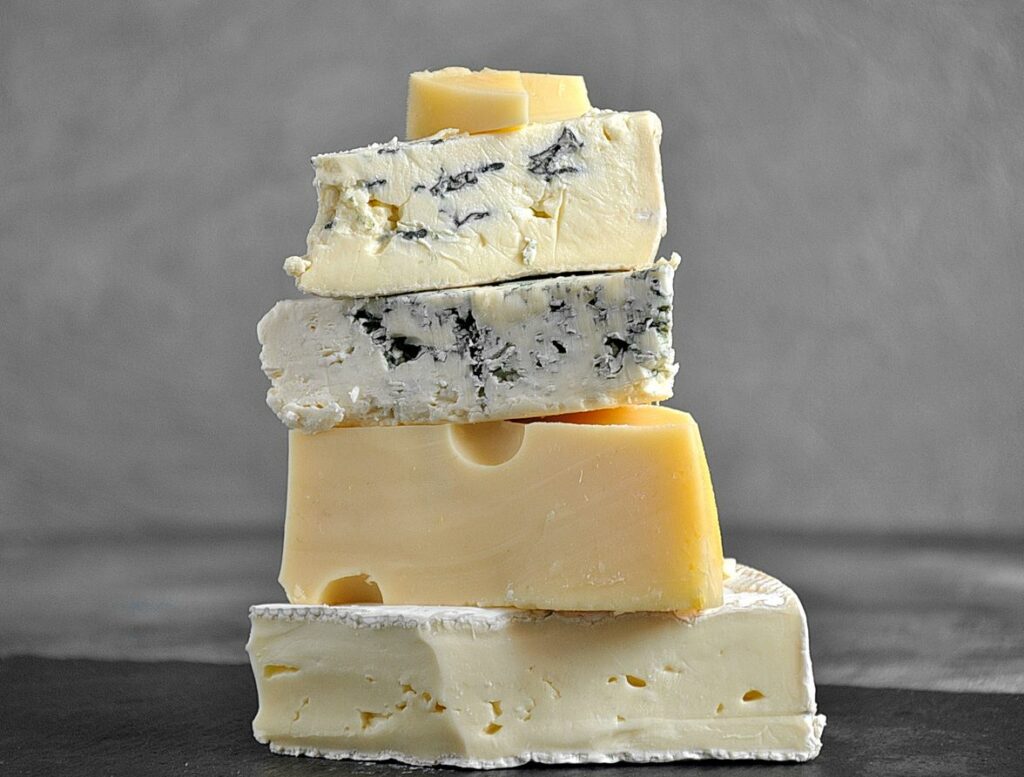
Accompaniments can enhance each bite and create unique flavor combinations, adding complexity to the charcuterie board. Some popular options are:
- Crackers or crisps for texture
- Dried or fresh fruits for natural sweetness
- Pickled vegetables for acidity
- Nuts for a crunchy and contrasting note
When creating a charcuterie board, one may want to consider pairing specific meats and cheeses together for a more harmonious tasting experience. For example, pairing a bold and spiced sausage with a strong-flavored cheese can intensify the flavors, while combining a mild prosciutto with a creamy brie can soften and illuminate the delicate nuances of each element.

Fundamentals of Wine and Cheese Pairing
When it comes to pairing wine with cheese and charcuterie, understanding the basics can help enhance the tasting experience. In this section, we will discuss the key aspects of wine and cheese pairing, focusing specifically on soft cheeses and hard cheeses.

Wine and Soft Cheese
Soft cheeses—such as Brie, Camembert, and goat cheese—pair well with a variety of wine styles. Often, these cheeses have a creamy, buttery texture and delicate flavors. To complement these characteristics, consider pairing with a crisp, white wine, like a Sauvignon Blanc, to provide a refreshing contrast.
- Sauvignon Blanc – pairs well with goat cheese, offering a zesty and refreshing taste
- Chardonnay – complements the richness of Brie and Camembert with its full-bodied, buttery profile
In general, lighter, white wines enhance the flavors of soft cheeses without overpowering them.

Wine and Hard Cheese
Hard cheeses, such as Cheddar, Gouda, and Parmesan, often have a nutty, robust, and more intense taste. Given their characteristics, they pair beautifully with medium to full-bodied red wines. These wines help to round out the flavors and provide a satisfying, balanced finish.
- Cabernet Sauvignon – a strong choice for sharp Cheddar, with its powerful structure and tannic profile
- Merlot – provides a smoother option for Gouda, balancing out the cheese’s creaminess
- Chianti – delivers a complementary contrast for Parmesan, emphasizing the nutty undertones
When pairing harder cheeses, keep in mind that an assertive wine can stand up to their bold flavors without clashing or competing.
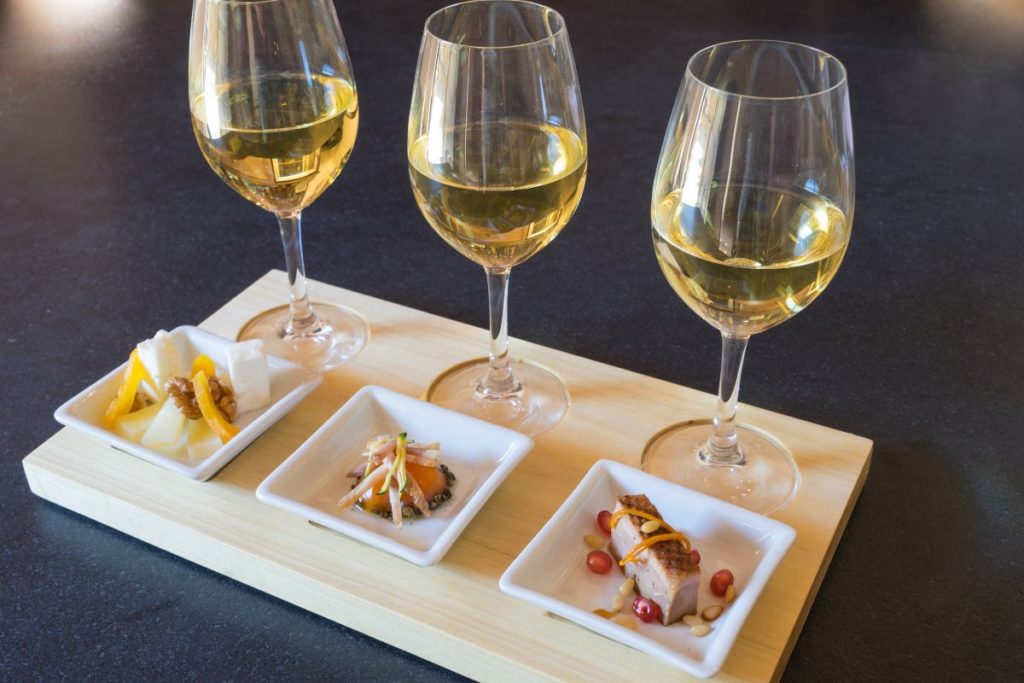
Remember, these suggestions are guidelines to help you confidently choose a wine to pair with your cheese and charcuterie selection. However, personal preferences should always come first, so don’t be afraid to experiment with different wines and cheeses. Enjoy the process of discovering your own palate and developing unique pairings that you love.
Fundamentals of Wine and Charcuterie Pairing
When it comes to pairing wine with cheese and charcuterie, there are a few fundamental principles to keep in mind. These will help create a harmonious and enjoyable experience when combining various flavors and textures.
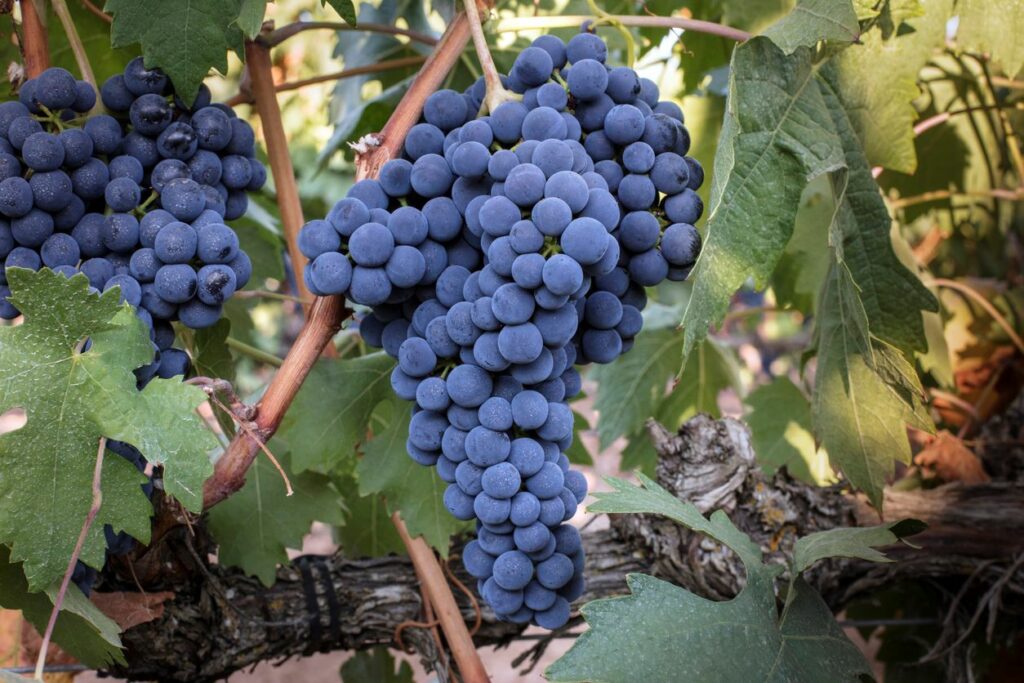
Wine and Smoky Meats
Smoky meats, such as smoked sausage and ham, often have a rich and intense flavor profile. To balance this, select wines that have a fruity and full-bodied character. A few examples include:
- Grenache: This red wine has a smooth, medium to full body with red fruit flavors, such as strawberry and cherry. It works well with smoky meats due to its complementary fruitiness.
- Syrah: A bold red wine with dark fruit flavors, such as blackberry and black cherry, Syrah can stand up to the strong flavors of smoked meats.

Wine and Salty Meats
For salty meats like prosciutto and salami, it is important to find a wine that does not overpower the delicate nature of these charcuterie selections. To counteract the saltiness, opt for wines that offer acidity and freshness. Here are some recommendations:
- Sauvignon Blanc: This crisp, light-bodied white wine, with its citrus and green fruit flavors, provides a refreshing balance to salty meats.
- Pinot Noir: A lighter red wine with red fruit notes, such as cranberry and cherry, Pinot Noir pairs well with salty meats by adding a touch of acidity and brightness.
Keep in mind that these suggestions can serve as a starting point for wine and charcuterie pairing. Ultimately, personal preference plays a significant role in what you find enjoyable. Feel free to experiment and discover new combinations that delight your taste buds.
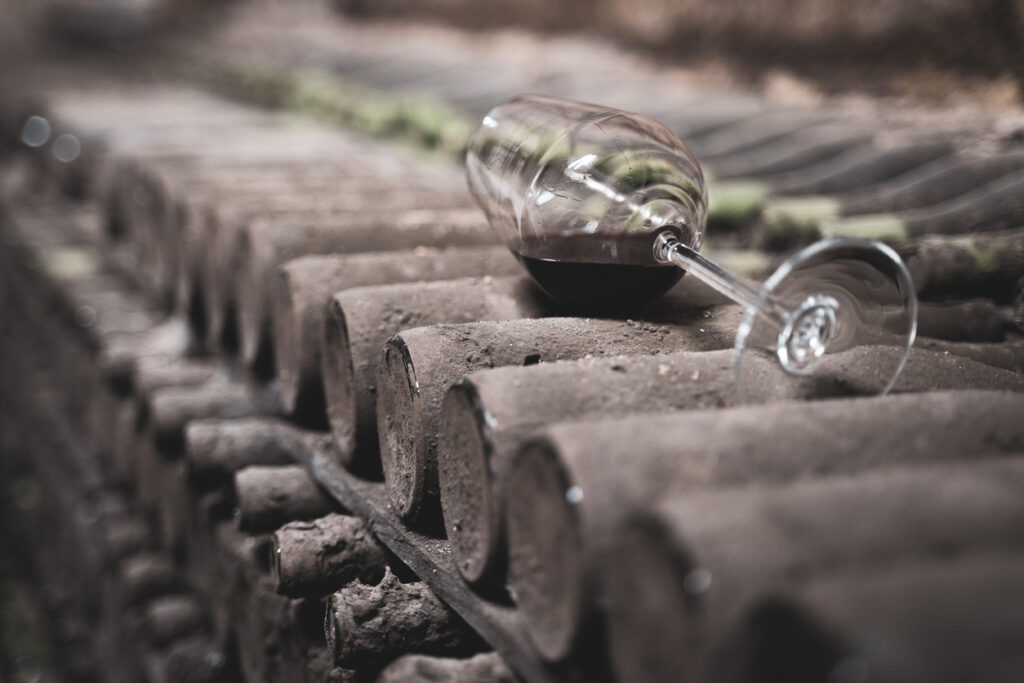
Advanced Wine, Cheese and Charcuterie Pairing
When it comes to advanced wine, cheese, and charcuterie pairing, a few essential principles can enhance the overall experience. These principles focus on balancing flavor profiles, textures, and intensities.
Contrasting and complementary pairings
The first principle is contrast. Pairing bold wines with delicate cheeses, and vice versa, enables the flavors to complement one another. For example, pairing a robust Cabernet Sauvignon with a creamy Brie cheese can create a pleasant experience where the flavors do not overpower one another.
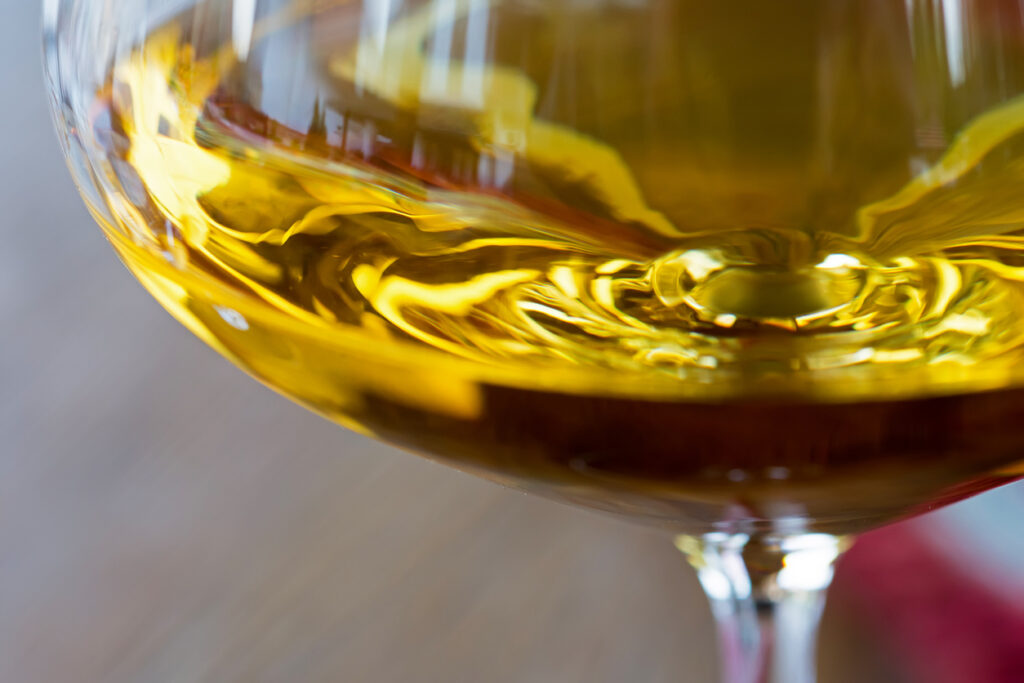
The second principle is complementarity. It’s essential to find similarities in flavors and textures to achieve a harmonious pairing. A rich, buttery Chardonnay complements a nutty, slightly fruity Gruyère cheese, as both share a full-bodied richness that enhances the tasting experience.
Classic pairings
To make pairing an enjoyable endeavor, consider these classic combinations:
- Red wine and hard cheese: Aged Cheddar, Manchego, or Pecorino Romano cheeses pair well with red wines such as Shiraz, Tempranillo, or Merlot.
- Full-bodied white wine and soft-ripened cheese: Brie or Camembert cheeses complement Chardonnay, Viognier, or White Burgundy wines.
- Young white wine and aged cheese: Crisp, acidic Sauvignon Blanc or Vermentino wines are the perfect match for aged Gouda, Comté, or Gruyère cheeses.
- Rosé wine and alpine cheese: A versatile and food-friendly Rosé pairs well with alpine-style cheeses like Beaufort, Appenzeller, or Emmental.
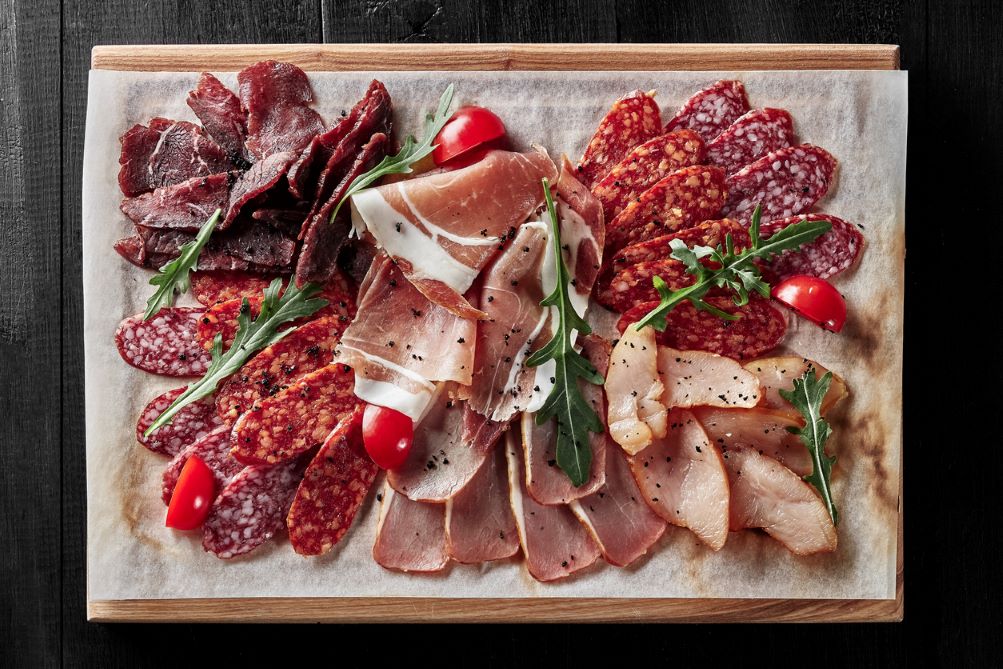
Following these principles, build a robust charcuterie board to elevate the wine and cheese tasting experience further. Include salty cured meats like prosciutto, salami, or chorizo to contrast and complement the cheese and wine selection. Add some crunchy and acidic accompaniments like crackers, breadsticks, pickles, or olives to balance out the rich flavors.
Remember that pairing wine, cheese, and charcuterie is a subjective experience. Encourage guests to experiment and discover their favorites while keeping these guiding principles in mind.
Perfect Pairings for Popular Cheeses and Charcuteries
When it comes to wine and cheese pairings, finding the right match can elevate the flavors of both components. Below is a list of popular cheese and charcuterie items, along with their ideal wine partners.
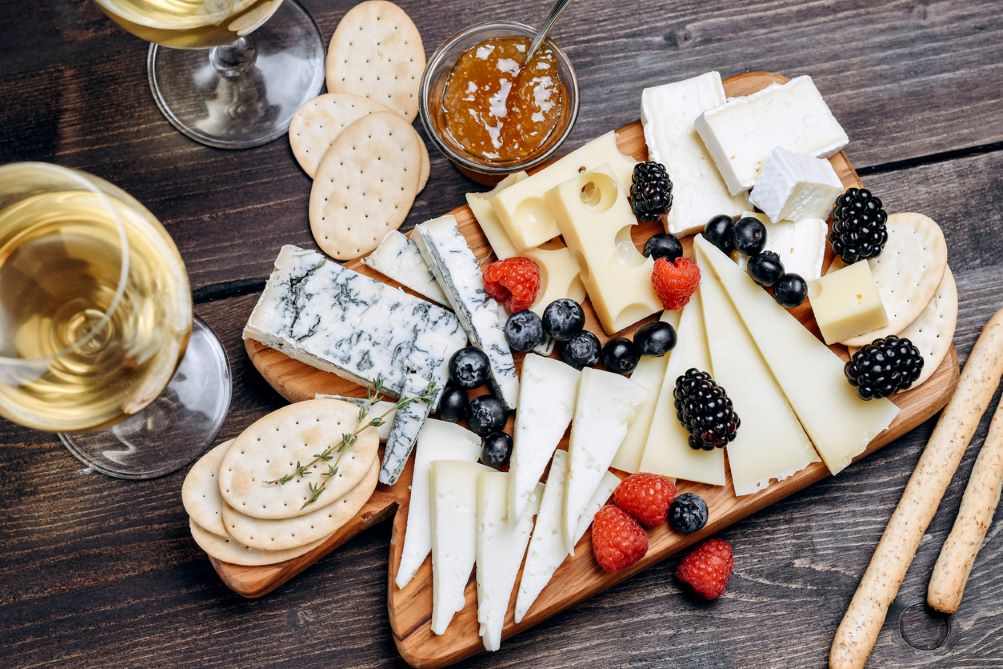
Cheese Pairings
Soft Cheeses:
- Brie: A light, fruity red wine like Pinot Noir complements the creamy, buttery notes of brie.
- Camembert: A crisp, acidic white wine such as Chardonnay highlights the earthy, rich flavors of Camembert.
Semi-soft Cheeses:
- Gouda: A full-bodied red wine with medium acidity, like Shiraz, pairs well with the sweet, nutty flavor of aged Gouda.
- Havarti: A vibrant and zesty Sauvignon Blanc brings out the creamy, delicate flavors of Havarti cheese.
Hard Cheeses:
- Cheddar: Choose a full-bodied, fruity red wine like Cabernet Sauvignon to contrast the sharp taste of cheddar.
- Parmesan: A classical match for this hard, savory cheese is an Italian red like Chianti or Barolo.
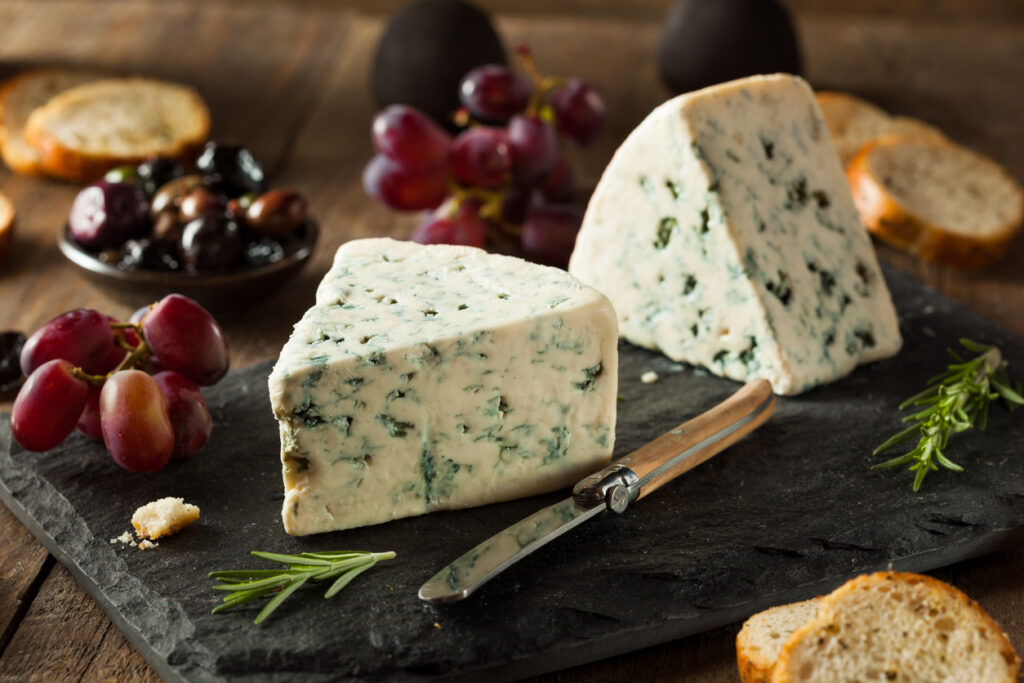
Blue Cheeses:
- Gorgonzola: The sweetness of a dessert wine like Sauternes or Port balances the pungent, salty nature of Gorgonzola.
- Roquefort: A full-bodied red with a touch of sweetness, such as a Zinfandel, pairs well with the bold and distinctive flavor of Roquefort cheese.
Charcuterie
When it comes to charcuterie, the saltiness and richness of meats can be balanced with wines that have acidity, bold flavors, and tannins. Here are some ideal pairings:
- Prosciutto: The saltiness of prosciutto is complemented by a dry and crisp sparkling wine, like Italian Prosecco.
- Salami: A rich and full-bodied red wine with high acidity, such as Sangiovese, accentuates the spices and fatty notes in salami.
- Pâté: A Chenin Blanc with good acidity and minerality would cut through the rich, fatty flavors of pâté.
- Chorizo: The smoky and spicy taste of chorizo pairs well with a fruity and medium-bodied red like Tempranillo.

Remember, when pairing wine with cheese and charcuterie, the key is to find a balance between flavors. Experimentation is encouraged, as individual tastes may vary.
Common Pairing Mistakes to Avoid
One common mistake when pairing wine with cheese and charcuterie is choosing a wine that is too tannic. Tannins can cause the cheese to taste chalky or unpleasant. To avoid this issue, consider selecting a lighter, less tannic wine such as a Pinot Noir or Merlot.
Saltiness
Another error often made is overlooking the saltiness of certain cheeses and cured meats. Salty flavors can clash with some wines, resulting in an unfavorable experience. When pairing with salty elements, opt for wines with higher acidity levels like a crisp Sauvignon Blanc or a sparkling wine like Champagne.

Clashing flavors
Pairing wines and cheeses with drastically different flavors can also lead to a less than ideal outcome. If the flavors are too contrasting, the pairing can overpower each other and not complement one another. To avoid this, try to match the intensity of the flavors; pair mild cheeses with a light-bodied wine, and stronger cheeses with a full-bodied wine.
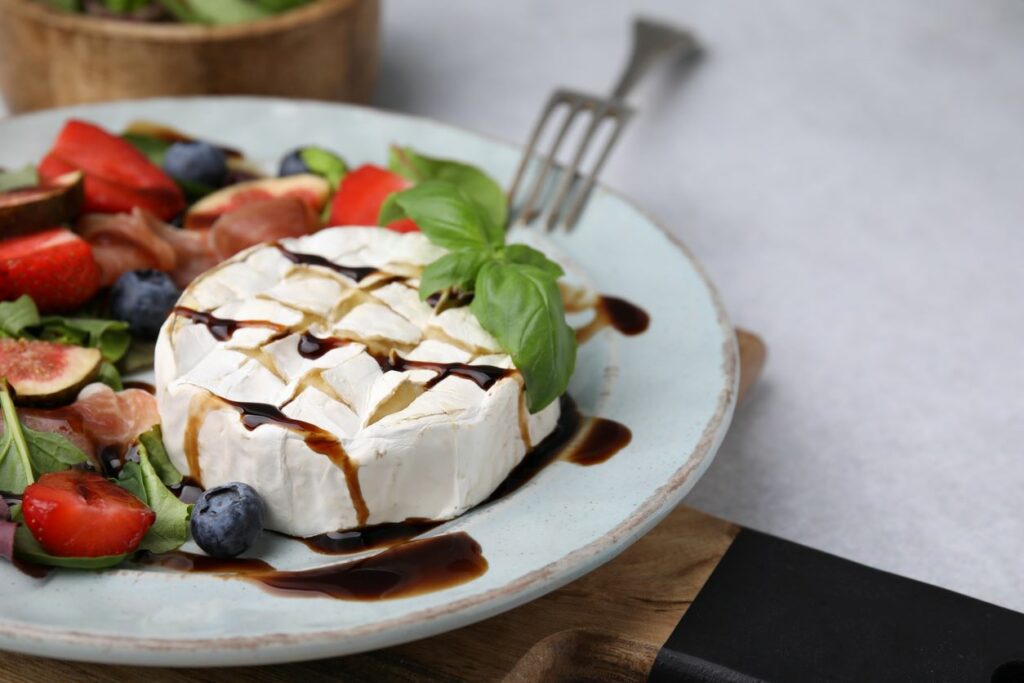
Finally, don’t be afraid to experiment with unconventional pairings, but also be mindful of regional pairings. While it is fun to explore new combinations, sometimes sticking to traditional regional pairings is a safe bet for a successful match. Wines and cheeses from the same region often share complementary flavors due to the similar terroir and production techniques. A classic example is pairing a French Brie with a Chardonnay from Burgundy.
Remember these guidelines when selecting wine pairings for your cheese and charcuterie boards, and you’ll be able to avoid common mistakes and create a delightful tasting experience for yourself or your guests.
Concluding Tips for Pairing Wine with Cheese and Charcuterie
When it comes to pairing wine with cheese and charcuterie, one should aim for balance and harmony. Some general guidelines can be helpful in achieving this balance and creating a memorable tasting experience.

To start with, consider the intensity and flavor profile of both the wine and the food. Rich, bold wines tend to pair well with strong, flavorful cheeses and charcuterie. On the other hand, lighter wines are often a better fit for milder, more delicate flavors.
Additionally, it is essential to pay attention to texture. Creamy, soft cheese pairs well with wines that have a similar mouthfeel and enough acidity to cut through the richness. Sturdy, hard cheeses can stand up to more robust wines with tannins.

Complementary flavors can also play a significant role in enhancing the tasting experience. For instance, a wine with fruity notes might pair well with a cheese that has hints of fruit in its flavor. Salty charcuteries can benefit from wines with crisp acidity, which can help balance the saltiness.
Ultimately, personal preferences and experimentation play a significant role in finding the perfect wine pairing for cheese and charcuterie. Taking note of these tips and keeping an open mind will undoubtedly lead to many enjoyable and successful pairing experiences.

